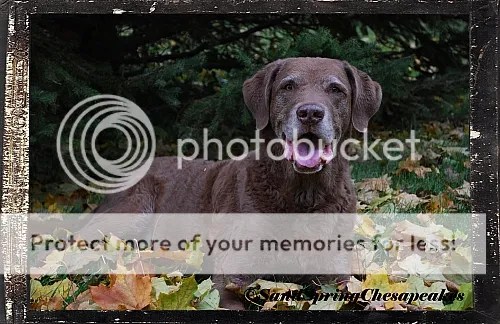Today’s Tasty Tuesday post is tied in with the results of Nellie’s bloodwork.
Tuesday: Senior Wellness ~ Nellie’s Health Series Part 3: Bloodwork, why routine bloodwork is a good idea.

You say your going to poke me now?
The American Heartworm Society recommends annual testing for heartworm disease. To test for heartworm disease you need to have a blood sample drawn as heartworm is detected in the blood from the antigen it produces. You can also see microfilaria in the blood if positive for heartworm disease. Even know I give my gang year round heartworm medication I still check them. You just never know when the medication is going to fail, when they will spit out a pill and not be protected or vomit up a pill. It’s better to catch early then later when more damage is done.
A fecal examination is also recommended once if not twice a year to check for intestinal parasites. My gang gets dewormed each month for intestinal parasites along with the heartworm medication they take. I still check a fecal sample for parasites that aren’t covered by the heartworm medication.
Since we were drawing blood for the heartworm test we drew more blood to have Nellie’s annual chemistry panel (checking internal organ function) and complete blood count (checking for infection) done. Bloodwork should be performed on young animals once a year and on seniors a couple times a year as the values can change quite quickly. Along with the chem panel/cbc I had her thyroid checked. All this was done as a package deal through the laboratory we use. Besides doing bloodwork at least once if not twice a year did I want to make sure I ran bloodwork on Nellie? Remember back on Sunday when I talked about her “funny” belly and I said her belly could have that look from cushing’s disease. If not you can read it here. As dogs get older they can come down with different diseases. One of those diseases is cushing’s disease where the adrenal gland isn’t producing any steroid this conditions medical terminology is called Hypoadrenalcorticism. The signs are lack of muscle in the abdomen making the dog look like it has a pot belly. This is the only sign I thought Nellie had. Other signs include, increase drinking/urination, excessive weight gain, fat deposits on the back end, hair loss. One way you can see if there is a chance the dog has cushing’s disease is by running bloodwork and checking the Alk Phos level. In cushing dogs the level is really high so that is one reason I wanted to do bloodwork.
Here are Nellie’s results:
The fecal exam (which isn’t shown) was negative for intestinal parasites. The heartworm test was negative. Her thyroid test was normal, her CBC (complete blood count) was normal.

CBC- Normal
Her Alk Phos that I was worried about was completely normal so really the chances of her having cushing’s disease right now is pretty much zero. The only abnormality is her kidney function. Her BUN (Blood Urea Nitrogen/Urea N) was 33 which is just over the high normal of 8-30.

Urea N – Slightly elevated
What does this mean? It means she has lost some kidney function. She could of lost it due to age relation, another disease going on, high protein diet that is excreting high levels of nitrogen. As long as it stays where it is and doesn’t creep up she will be ok. We do need to watch the protein levels in her diet and make sure she is getting highly digestible proteins so there are fewer nitrogen by-products that have been found in dogs with kidney failure to make the kidneys work harder. In dogs with kidney failure the excess nitrogen can become high in the bloodstream which can cause problems with other tissues. This last fall/winter Nellie took to taking off and eating deer carcass’s so her high protein diet could be coming from that. The doctor suggested we run bloodwork again in the summer when Nellie isn’t taking off and see if the values change. When the kidney value is elevated it is a good idea to run a urinalysis one to make sure the kidneys are concentrating urine and to make sure there isn’t a hidden bladder infection that may of lead to a kidney infection that might elevate the levels. Doing this urinalysis is what uncovered Nellie’s vaginitis which I wrote about yesterday, you can read it here. Thursday I will write about the components of a urinalysis.
Stop back tomorrow to read: Senior Wellness ~ Nellie’s Health Series Part 4: Cystocentesis
Powered by Linky Tools
Click here to enter your link and view this Linky Tools list…

















































 and The #1 Vet-Recommended Dental Chew*
and The #1 Vet-Recommended Dental Chew*
























